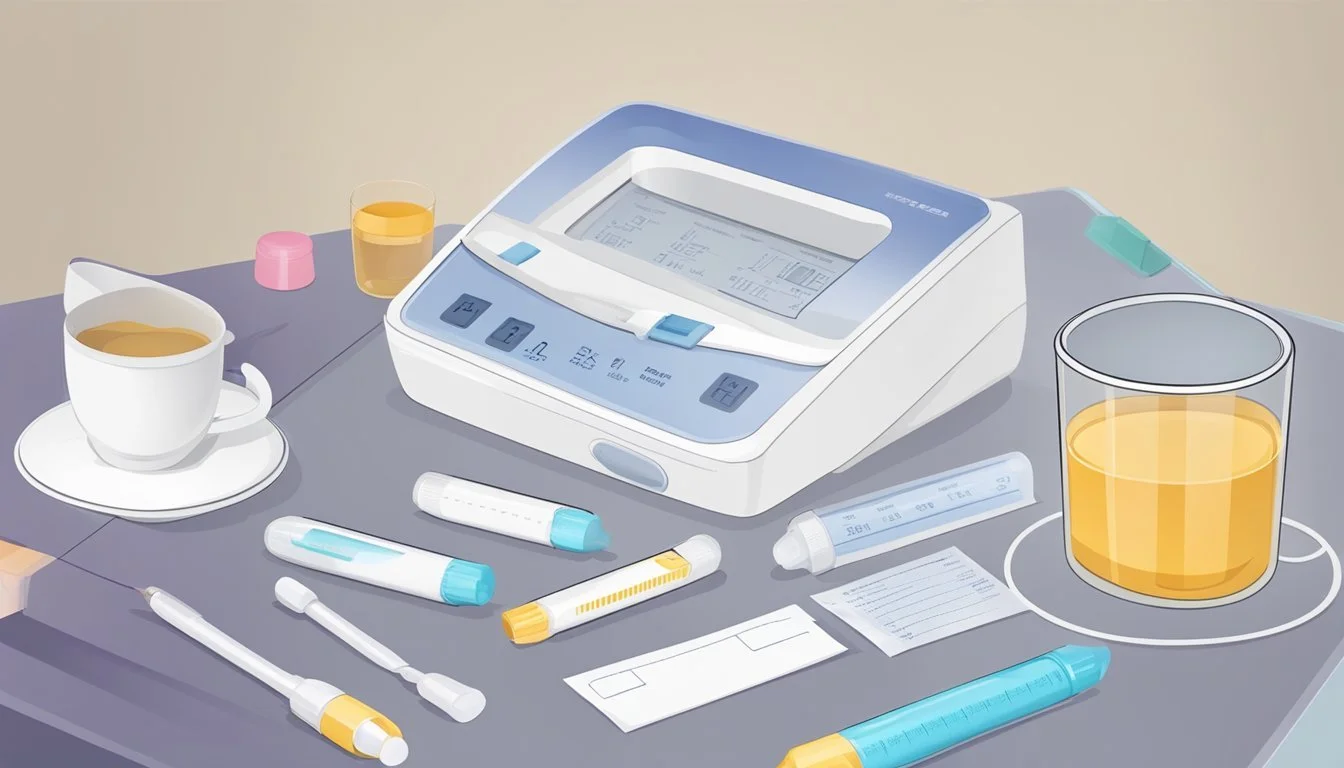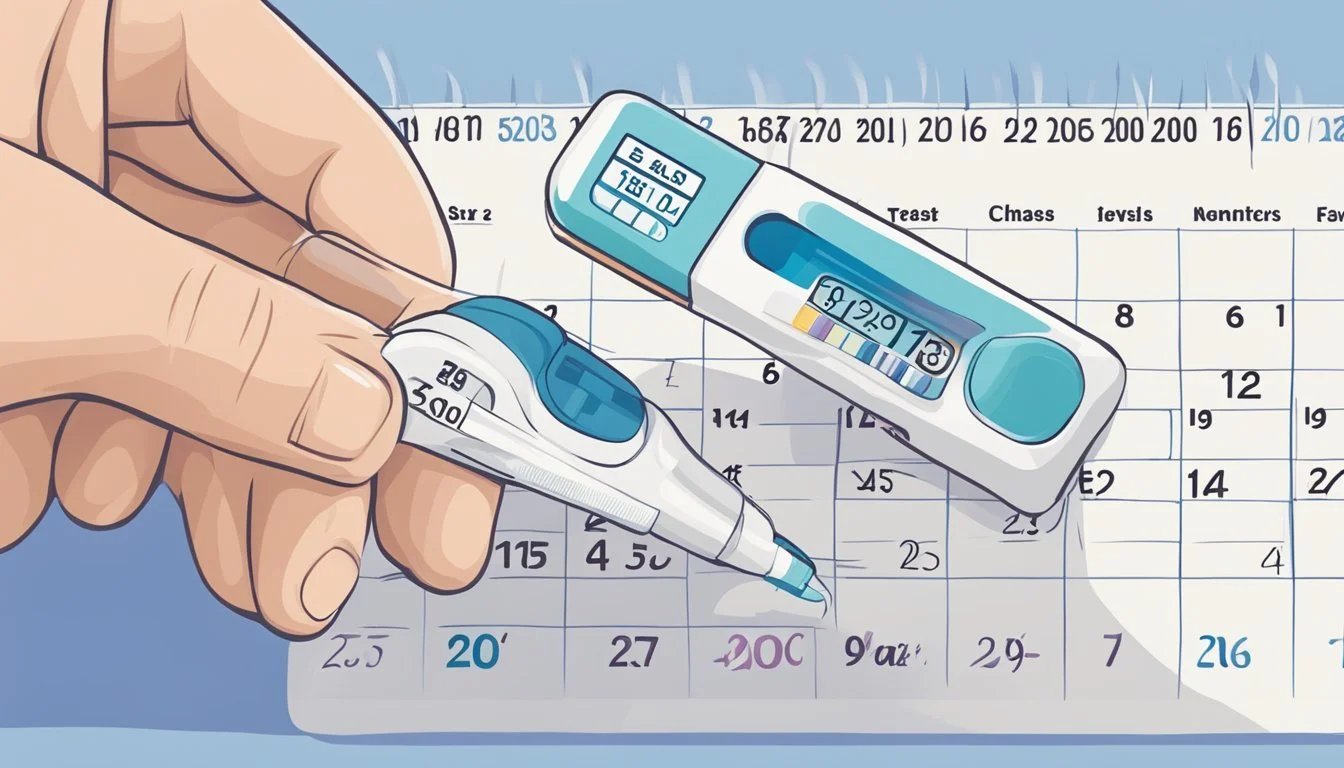Five Below Pregnancy Test
Affordable Option for Early Detection
Pregnancy tests are essential tools for anyone wondering if they might be expecting. While many opt for well-known brands, budget-conscious consumers may consider more affordable options like those found at Five Below stores. These low-cost tests aim to provide accurate results without breaking the bank.
Five Below pregnancy tests typically retail for $5 or less, making them significantly cheaper than many drugstore alternatives. Despite the lower price point, these tests claim to detect pregnancy hormones with similar accuracy to more expensive brands. However, it's important to note that no pregnancy test is 100% accurate, regardless of cost.
When using a Five Below pregnancy test, users should carefully follow the instructions provided. Like other home pregnancy tests, these work by detecting human chorionic gonadotropin (hCG) in urine. For the most reliable results, it's best to test first thing in the morning when hCG levels are most concentrated. If unsure about the results or experiencing pregnancy symptoms, consulting a healthcare provider is always recommended.
Understanding Pregnancy Tests
Pregnancy tests are essential tools for detecting pregnancy early and accurately. They work by measuring hormone levels in urine or blood samples, providing results within minutes.
Types of Pregnancy Tests
There are two main types of pregnancy tests: urine tests and blood tests. Urine tests are the most common and can be done at home. They come in various forms, including dipsticks, midstream tests, and digital tests. Blood tests are performed at medical facilities and can detect pregnancy earlier than urine tests.
Home pregnancy tests are widely available and offer convenience and privacy. They typically provide results in 3-5 minutes. Some brands claim to detect pregnancy up to 6 days before a missed period.
How Pregnancy Tests Work
Pregnancy tests detect the presence of human chorionic gonadotropin (hCG) in urine or blood. This hormone is produced by the placenta shortly after implantation occurs. As pregnancy progresses, hCG levels rise rapidly, doubling every 48-72 hours.
Urine tests use antibodies to bind to hCG molecules. When enough hCG is present, it triggers a visible result on the test strip or digital display. Blood tests measure the exact amount of hCG in the bloodstream, providing more precise results.
Accuracy and Sensitivity
Most home pregnancy tests claim 99% accuracy when used correctly. However, factors like testing too early or misinterpreting results can lead to false negatives or positives. Test sensitivity varies by brand, with some detecting hCG levels as low as 10 mIU/mL.
To improve accuracy:
Follow instructions carefully
Use first morning urine
Wait until after a missed period
Confirm results with a second test
False negatives are more common than false positives. A false negative can occur if testing too early or if hCG levels are too low to detect.
Timing and Early Detection
The best time to take a pregnancy test is after a missed period. However, some tests can detect pregnancy earlier. Early detection tests may work up to 5 days before a missed period, but accuracy improves with each passing day.
Factors affecting early detection:
Sensitivity of the test
Timing of ovulation and implantation
Individual hCG production rates
Testing too early can lead to false negatives. For most reliable results, wait until the first day of a missed period or later.
Reading the Results
Test results are typically displayed as:
Lines (one or two)
Plus/minus symbols
Words ("Pregnant" or "Not Pregnant")
Digital tests provide clearer results, reducing interpretation errors. Always check the test's instructions for specific result indicators.
Positive result: Any visible line, even if faint, usually indicates pregnancy. Negative result: Only the control line appears. Invalid result: No lines appear, or only the test line is visible.
If results are unclear or unexpected, wait 2-3 days and test again. Consult a healthcare provider for confirmation and next steps.
Factors Affecting Test Results
Pregnancy test results can be influenced by various biological and external factors. Understanding these factors is crucial for interpreting test outcomes accurately and avoiding potential confusion.
Chemical Pregnancy and Miscarriage
Chemical pregnancies occur when a fertilized egg implants but doesn't develop further. These early miscarriages can affect test results. HCG levels rise briefly, potentially causing a positive test, then drop rapidly.
A woman may experience a positive result followed by a negative one days later. This situation can be emotionally challenging and confusing. Regular testing or consulting a healthcare provider can help distinguish between ongoing pregnancies and chemical pregnancies.
Miscarriages later in pregnancy can also impact test results. HCG levels may remain detectable for weeks after a miscarriage, leading to false positives.
Medications and HCG Levels
Certain medications can interfere with pregnancy test accuracy. Fertility treatments containing HCG can cause false positives. These medications mimic the hormone naturally produced during pregnancy.
Other drugs that may affect results include:
Some antidepressants
Anti-anxiety medications
Diuretics
Antihistamines
It's essential to inform healthcare providers about all medications when discussing pregnancy test results. Some medical conditions can also lead to elevated HCG levels, potentially causing false positives.
Cycle Length and Ovulation
Menstrual cycle length and ovulation timing play crucial roles in test accuracy. Women with longer cycles may need to wait longer before testing to ensure reliable results.
Ovulation typically occurs 14 days before the next period. However, this can vary. Factors affecting ovulation include:
Stress
Travel
Illness
Testing too early after unprotected sex may lead to false negatives. The body needs time to produce detectable HCG levels. Waiting until after a missed period often provides more accurate results.
Understanding one's fertile window can help determine the best time to test. Tracking ovulation through various methods can provide valuable insights for timing pregnancy tests effectively.
Selecting the Right Pregnancy Test
Choosing an appropriate pregnancy test involves considering sensitivity, brand reputation, ease of use, and individual needs. Factors like test accuracy, detection timeframes, and result clarity play crucial roles in making an informed decision.
Test Sensitivity and Detecting Early Pregnancy
Pregnancy tests detect human chorionic gonadotropin (hCG) in urine. Higher sensitivity tests can detect lower levels of hCG, allowing for earlier pregnancy detection. The First Response Early Result test is known for its high sensitivity, capable of detecting pregnancy up to 6 days before a missed period.
Clearblue Early Detection also offers high sensitivity, detecting 76% of pregnancies 6 days before the expected period. These tests are ideal for those eager to know their status as soon as possible.
Lower sensitivity tests may require waiting until after a missed period for accurate results. It's important to follow package instructions carefully, as testing too early can lead to false negatives.
Brands and Types of Tests Available
Several reputable brands offer reliable pregnancy tests:
Clearblue: Known for digital tests with clear results
First Response: Offers both digital and traditional tests
Pregmate: Provides affordable test strips
Easy@Home: Another budget-friendly option with test strips
Tests come in various formats:
Digital tests: Display results as "Pregnant" or "Not Pregnant"
Traditional line tests: Show one or two lines
Test strips: Basic, no-frills option
Digital tests like Clearblue Digital with Smart Countdown can be easier to interpret but are often more expensive. Traditional line tests and strips are generally more affordable but may require careful reading.
Ease of Use and Interpretation
Ease of use varies among pregnancy tests. Digital tests typically offer the simplest interpretation, with clear text results. The Clearblue Digital Pregnancy Test with Smart Countdown features a progress bar, reducing anxiety during the waiting period.
Traditional line tests require users to identify faint lines, which can be challenging. Clear instructions and good lighting are essential for accurate interpretation.
Test strips are the most basic option. They require dipping into a urine sample and can be more difficult to use correctly. However, they are cost-effective for frequent testing.
Pregnancy Tests for Special Circumstances
Some tests cater to specific needs:
High sensitivity tests for early detection
Bulk packs of strips for those trying to conceive
Midstream tests for easier urine collection
Tests with larger handles for improved grip
For those with vision impairments, digital tests with large displays or tests that provide audible results may be preferable. Women with irregular cycles might benefit from highly sensitive tests or bulk packs for frequent testing.
In cases of fertility treatments or high-risk pregnancies, healthcare providers might recommend specific tests or blood tests for more accurate results.
When to Take a Pregnancy Test
Timing is crucial when taking a pregnancy test for accurate results. The best time depends on several factors, including your menstrual cycle and the sensitivity of the test.
Ideal Time in the Menstrual Cycle
The optimal time to take a pregnancy test is after a missed period. This allows enough time for hCG levels to build up in your body. For those with regular cycles, the first day of a missed period is usually about 14 days after ovulation.
Early detection pregnancy tests can potentially show results up to 5 days before a missed period. However, these tests are less reliable and may give false negatives if taken too early.
For the most accurate results, wait until at least the first day of your missed period before testing.
Importance of Testing After a Missed Period
Testing after a missed period increases the likelihood of getting an accurate result. By this time, hCG levels are typically high enough to be detected by most home pregnancy tests.
Using the first urine of the day can improve accuracy. Morning urine is more concentrated and contains higher levels of hCG.
If your period is irregular, wait at least 21 days after you last had unprotected sex before testing.
What to Do After a Positive or Negative Result
A positive result usually means you're pregnant. Schedule an appointment with your healthcare provider to confirm the pregnancy and discuss next steps.
If the test is negative but you still suspect pregnancy, wait a few days and test again. Early testing can sometimes yield false negatives.
Look out for early signs of pregnancy such as:
Nausea
Breast tenderness
Fatigue
Frequent urination
If symptoms persist or your period doesn't start, consult a healthcare professional for further evaluation.
Understanding the Limitations
Pregnancy tests from Five Below have inherent limitations that users should be aware of. These include potential inaccuracies in results and issues related to test expiration.
False Negatives and Positives
Five Below pregnancy tests can sometimes produce false results. False negatives may occur if the test is taken too early, before hCG levels are detectable. This can lead to confusion and delayed pregnancy confirmation.
False positives are less common but can happen due to certain medications or medical conditions. A faint line on the test may be difficult to interpret, causing uncertainty.
To minimize false results, it's advisable to:
Wait until after a missed period to test
Use first morning urine for higher hCG concentration
Repeat the test after a few days if results are unclear
Expiration Dates and Test Validity
The accuracy of Five Below pregnancy tests decreases over time. Each test has an expiration date printed on the packaging.
Using an expired test may lead to:
Inaccurate results
Faded or unclear test lines
Chemical degradation affecting test sensitivity
To ensure test validity:
Check the expiration date before purchase
Store tests in a cool, dry place
Avoid using tests past their expiration date
Test accuracy also depends on proper storage and handling. Exposure to heat, moisture, or direct sunlight can compromise test performance, even before the expiration date.
Additional Considerations and Tips
Pregnancy testing involves more than just taking a test. Cost factors, timing issues, and professional guidance all play important roles in the process. Tracking and supplementary testing can provide additional insights.
Budget and Cost of Pregnancy Tests
Pregnancy tests vary widely in price. Five Below offers inexpensive options, typically priced at $5 or less. These budget-friendly tests can be a cost-effective choice for frequent testing. However, they may have lower sensitivity compared to premium brands.
More expensive tests often provide faster results and higher accuracy. Some detect pregnancy earlier than budget options. Digital tests with clear readouts cost more but reduce interpretation errors.
Bulk packs of strip tests offer significant savings for those trying to conceive. These no-frills options are popular among women tracking ovulation and testing frequently.
Dealing With Irregular Periods
Irregular periods can complicate pregnancy testing. Women with unpredictable cycles may need to test more often. This increases the importance of affordable testing options.
Tracking basal body temperature and cervical mucus can help pinpoint ovulation. This information aids in timing pregnancy tests more accurately.
For very irregular cycles, testing weekly or bi-weekly may be necessary. Using inexpensive tests makes this approach more feasible.
Some women with irregular periods benefit from ovulation predictor kits. These help identify fertile windows, improving the timing of intercourse and subsequent pregnancy testing.
Consulting a Healthcare Professional
An OB-GYN can provide valuable guidance on fertility and pregnancy testing. They may recommend specific types of tests based on individual health factors.
For women struggling with infertility, a doctor can order more sensitive blood tests. These detect lower levels of hCG than urine tests.
Healthcare providers can also address underlying causes of irregular periods. Treating these issues may improve cycle regularity and ease pregnancy detection.
Doctors can advise on the best testing practices for women using birth control or fertility treatments. This guidance ensures accurate results in complex situations.
Supplementing with Professional Testing
While home tests are convenient, professional testing offers additional benefits. Blood tests can detect pregnancy earlier than most urine tests.
Quantitative blood tests measure exact hCG levels. This information helps track pregnancy progress and identify potential issues early.
Some clinics offer rapid urine tests with immediate results. These tests are often more sensitive than home versions.
Professional testing is crucial for confirming pregnancy after a positive home test. It allows for immediate discussion of prenatal care options.
Using a Mobile App for Tracking
Fertility tracking apps help women predict ovulation and optimal testing times. Many apps integrate with smart thermometers for precise cycle tracking.
Some apps offer reminders for taking pregnancy tests. This feature is particularly useful for women with irregular cycles.
Apps can log test results and symptoms, providing a comprehensive overview for healthcare providers. This data aids in identifying patterns and potential issues.
Many tracking apps include forums where users share experiences. This community support can be valuable for women trying to conceive or dealing with pregnancy concerns.








